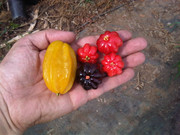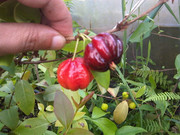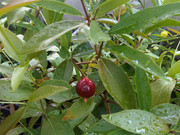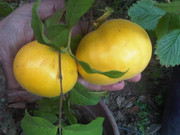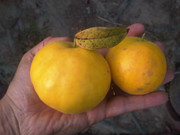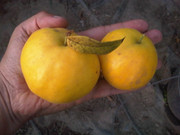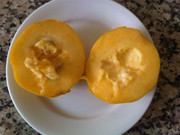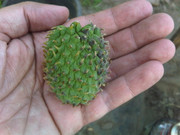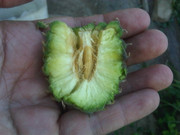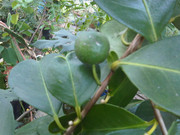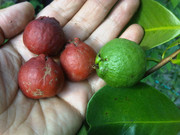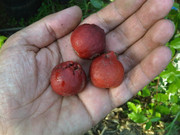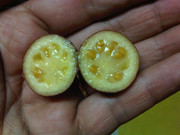326
Tropical Fruit Discussion / Have you ever seen Rio Grande cherries like these?...Eugenia involucrata
« on: June 14, 2014, 03:52:37 AM »
Hello all
I have several "Cherry of the Rio Grande" and I have seen many others, but I have one that stands out giving me some really nice and bigger fruits than all others.
I keep wondering if this is the one they call the "giant" but my fruits seem fatter than those of the Lorenzi's book.
Does anyone here has photos of the Giant form fruits to compare? ... thank you in advance!
here are the photos...one of the fruits was specially big... the fruits could have stayed on the tree a little bit more but I had to harvest them because the damn birds were getting them all.... but they were already perfect taste-wise at this stage.
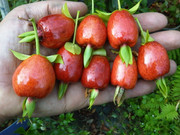

The biggest one had 3 seeds
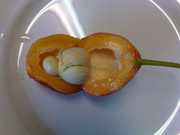
I have several "Cherry of the Rio Grande" and I have seen many others, but I have one that stands out giving me some really nice and bigger fruits than all others.
I keep wondering if this is the one they call the "giant" but my fruits seem fatter than those of the Lorenzi's book.
Does anyone here has photos of the Giant form fruits to compare? ... thank you in advance!
here are the photos...one of the fruits was specially big... the fruits could have stayed on the tree a little bit more but I had to harvest them because the damn birds were getting them all.... but they were already perfect taste-wise at this stage.


The biggest one had 3 seeds


 ... I've read somewhere the fruits are very good... better than average at least... do you know if they came true from seed?
... I've read somewhere the fruits are very good... better than average at least... do you know if they came true from seed?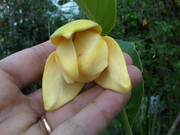
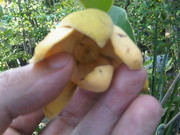
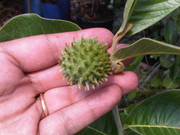

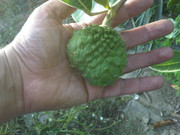

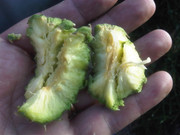
 ... but there are no free lunches anywhere and only those guests that pay the land lord are authorized to stay longer, because the land lord needs to eat also
... but there are no free lunches anywhere and only those guests that pay the land lord are authorized to stay longer, because the land lord needs to eat also  ... but I'm a very patient and comprehensive land lord
... but I'm a very patient and comprehensive land lord  ... I even accept a lot of different currencies for payment (fruits, flowers, leaves, roots, seeds, etc)... as long as they pay, they are allowed to stay
... I even accept a lot of different currencies for payment (fruits, flowers, leaves, roots, seeds, etc)... as long as they pay, they are allowed to stay 